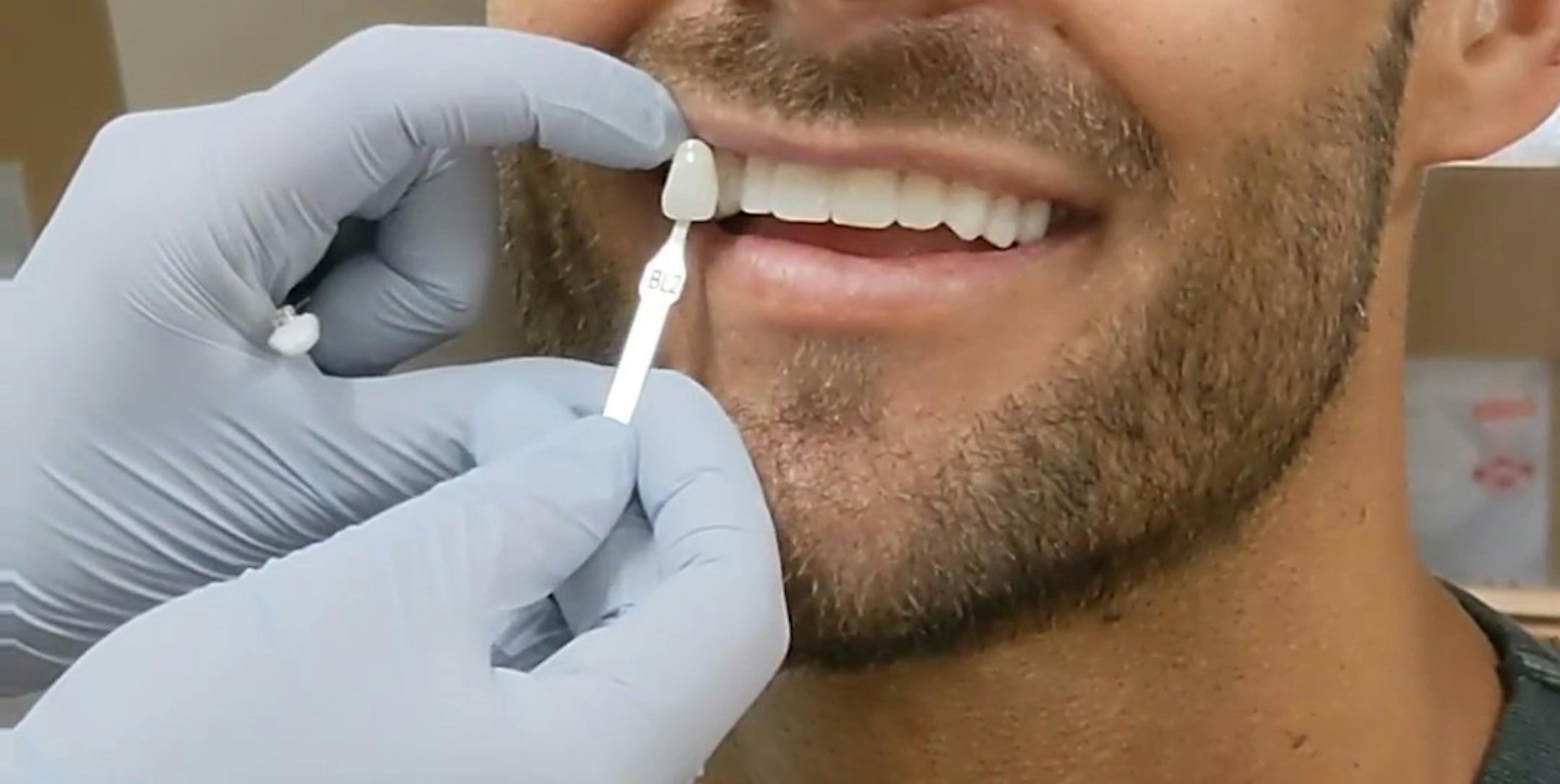There’s only one place in Australia that has launched a completely new series of Hybrid veneers - Vogue Dental Studios. An innovative and new technology blend of veneer, it is the first of its kind and everyone has the same question on their lips - what is it?
In layman's terms, Hybrid veneers, as stated on their website, are made with the perfect blend of porcelain and composite materials. Much like the process of porcelain veneers, they are digitally designed by a cosmetic dentist and hand finished by a master ceramist. We will delve more into the details below to uncover a true comparison between the three veneers so you can have a better understanding before making your final decision.
With several types of veneers available, it can be challenging to choose the right one for you. As the name suggests, Hybrid veneers are a Hybrid of Porcelain and Composite materials. It is a relatively new option that combines the best of both worlds when it comes to porcelain and composite veneers.
If you're considering this treatment, you can explore more about veneers in Sydney, Melbourne, and Gold Coast. to see which option aligns best with your smile goals.
What Are Hybrid Veneers?
Hybrid veneers are an innovative dental treatment designed to provide a balance between the durability of porcelain veneers and the affordability and ease of composite veneers. They are crafted from a unique blend of ceramic and composite materials, resulting in a veneer that offers both strength and aesthetic appeal without breaking the bank.
Benefits of Hybrid Veneers
- Durability: Hybrid veneers are more robust than composite veneers, thanks to the ceramic component, making them less prone to chipping and cracking.
- Aesthetic Appeal: They offer a natural and lifelike appearance, closely mimicking the translucency and shine of natural teeth.
- Cost-Effective: Hybrid veneers are generally more affordable than porcelain veneers, providing a cost-effective option and almost more than half the price of porcelain veneers
- Minimally Invasive: The procedure for applying hybrid veneers is often less invasive than that for porcelain veneers, often requiring less removal of the natural tooth structure.
Comparing Porcelain, Composite, and Hybrid Veneers
This is the showdown! How do these different options for veneers fare against each other?
Material Composition
Composite Veneers
Composite veneers are made from a resin-based composite material, these veneers are more affordable and can be applied quickly, but they are less durable than porcelain and can stain over time.
Porcelain Veneers
Porcelain units are made entirely from high-quality ceramic, porcelain units are known for their exceptional durability and natural appearance that can be completely malleable to your desired aesthetic outcome.
Hybrid Veneers
Hybrid veneers combine ceramic and composite materials, offering a middle ground in terms of durability, cost, and aesthetic appeal.
Durability
Composite Veneers
Composite veneers are susceptible to wear and staining, requiring more frequent maintenance. Composite veneers can last anywhere between 2-5 years.
Porcelain Veneers
Porcelain veneers are extremely durable and resistant to staining, but can be costly to repair if damaged. Porcelain units can last for 10-15+ years.
Hybrid Veneers
Hybrids are more durable than composite but not as strong as porcelain, offering a balanced solution. Hybrid veneers can last between 7-10 years if properly cared for.
Cost
Composite Veneers
Composite veneers are more affordable, with lower upfront costs but potentially higher long-term maintenance expenses.
Porcelain Veneers
Porcelain veneers are typically the most expensive due to the high-quality materials and longer-lasting results.
Hybrid Veneers
Generally priced between porcelain and composite veneers, hybrid veneers provide a cost-effective alternative with good durability.
Application Process
Composite Veneers
Often completed in a single visit, composite veneers typically requires minimal tooth preparation. Composite veneers are applied by the dentist.
Porcelain Veneers
Porcelain veneers require multiple visits, including a consultation, preparation, and fitting appointments. The process is the most lengthy with smile makeovers being completed typically in under a month.
Hybrid Veneers
The application process is faster and less invasive than porcelain but as there is such a large portion of porcelain within the material, hybrid veneers still require a master ceramist to make adjustments along with the dentist.
Aesthetic Results
Composite Veneers
Composite veneers can be tailored to look natural but there are limitations in colour and may not achieve the same level of translucency as porcelain.
Porcelain Veneers
Porcelain units offer the most natural and translucent appearance, closely resembling natural teeth.
Hybrid Veneers
Hybrid veneers provide a natural look with a balance of translucency and shine, offering an appealing aesthetic result.
Conclusion
Hybrid veneers are an excellent option for those looking to improve their smile with a durable, cost-effective, and aesthetically pleasing solution. They offer a middle ground between the strength and beauty of porcelain veneers and the affordability and ease of composite veneers. If you’re considering veneers, consult with your dentist to determine if hybrid veneers is the right choice for you.

Written By
Intan Nobury
An appreciator of art, novels and high intensity sports. With a passion for work and a dangerous addiction to tea.



